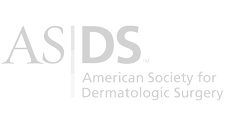We Care About Your Health
Quality, Kindness and Compassion
Frequently Asked Questions
-
What are the kinds of skin cancers?
There are three common forms of skin cancer:
- Basal cell carcinoma is the most common. It almost never spreads internally; however, it slowly enlarges locally and can consume normal structures in its vicinity.
- Squamous cell carcinoma causes a similar local destruction as basal cell carcinoma and is usually slow growing. Squamous cell carcinomas occurring on sun exposed areas of the body rarely spread internally.
- Malignant melanoma is a less common skin cancer, which is considered to be more serious because it has a greater potential to spread internally.
-
What is Mohs surgery?
Mohs surgery was first developed in the 1930’s by Dr. Frederic Mohs. The procedure is sometimes referred to AS Mohs Chemosurgery because chemicals were originally used to remove the tumor. The tumors treated today are usually removed surgically without chemicals. This is now referred to as Mohs micrographic surgery.
The surgery involves removing all visible tumor. An additional layer of “normal appearing” tissue is then removed. This layer is then frozen and processed with special stains for examination under a microscope. If microscopic “roots” of the tumor are identified by the surgeon, they are carefully mapped out and additional surgery is performed in these areas only.
-
What are the advantages of Mohs surgery?
Because the tumor is carefully and microscopically mapped out by the surgeon, only the diseased tissue is removed and healthy tissue is conserved. This leads to the smallest possible wound and allows for the smallest possible scar. Most importantly, Mohs surgery offers the highest cure rate for skin cancer.
-
Which skin cancers need Mohs surgery?
Mohs surgery is used on tumors that have a higher risk of recurrence. These include those cancers which have recurred or failed to respond to simpler surgical procedures. Also, tumors in high-risk locations such as many areas of the head and neck are best treated by Mohs surgery. Sometimes the biopsy will show a very aggressive cancer, which can also indicate a need for Mohs surgery.
-
What alternative treatments are available for skin cancers?
Destruction techniques, such as electrodessication and curettage or cryosurgery, excisional surgery and radiation therapy are sometimes used. They generally produce a lower cure rate on recurrent or extensive skin cancers. They are useful options in some specific cases, and for some primary skin cancers.
-
Will there be a large defect after the surgery?
The final size of the wound is completely determined by the size of the microscopic tumor extension. The primary goal is to remove all the cancer. If the cancer proves to be large, the resultant wound will be large.
-
How is the defect repaired?
Sometimes the wound can be sutured (stitched) closed. Some are left to heal on their own. If the first two choices are not possible, a more complicated reconstruction may be necessary using a procedure such as a skin graft or skin flap.
-
If reconstruction is necessary, will it be done on the same day?
This is usually done the same day. Sometimes the wound needs a waiting period of days or weeks before the repair can be performed. Some repairs may require another surgical specialist. In those cases a referral is made.
-
Will there be much pain?
Usually the only discomfort during the operation is when the first numbing medicine is injected. There may be moderate discomfort later in the day or during the first night after the surgery, but extra-strength Tylenol, Ibuprofen, and ice compresses are usually quite effective in alleviating the discomfort.
-
What are the chances that the cancer will recur after the surgery?
This varies with the size and location of the tumor and whether the tumor is primary or recurrent. For basal cell carcinomas treated by Mohs surgery, 95 to 99 patients out of 100 are cured.
-
What are the risks of Mohs surgery?
There are risks associated with any form of surgery. Since Mohs surgery is usually performed as an outpatient surgery, under local anesthetic, with the patient awake, it is safer than most forms of surgery. There will be some permanent scar after the surgery. We use plastic and reconstructive surgery techniques to minimize or hide scars as much as possible. Scars mature and fade considerably over a period of months. If the results are not satisfactory after several months, a surgical revision can be performed, however this is rarely necessary. Bleeding, infection or nerve injury can occur with any form of skin surgery.
-
What could happen if I choose to do nothing?
Most basal cell carcinomas and squamous cell carcinomas grow slowly so things may seem fine for a while; however the tumor will slowly enlarge and will eventually produce problems such as pain, infection and bleeding. The larger a tumor is allowed to grow, the more likely it will require extensive reconstruction after removal. With time, most tumors gradually burrow deeply into the body and, if neglected, some can spread to distant sites.
-
How should I prepare for the surgery?
Take all of your normal medications. Make-up, moisturizers, perfume, cologne and jewelry should not be worn on the day of surgery. Wear comfortable clothing; a shirt or blouse that buttons rather than one that slips over the head is best. You may want to shower or wash your hair prior to the surgery as bandages may need to be kept dry for 1 to 5 days after the surgery. You may be in the office most of the day; therefore, you may want to bring a snack or lunch with you. Also, you may want to bring your favorite reading material, as there is a good deal of waiting involved while your tissue is being processed.
-
How much will my surgery cost?
The costs vary depending upon the complexity of the case. The range is from about a thousand dollars to over three thousand dollars.
-
What is required after the surgery?
For most cases, the surgery area is cleaned daily with tap water and then covered with Aquaphor ointment or Vaseline (available over the counter in drugstores). It is likely that you will need to refrain from strenuous activity for 1-2 weeks following the surgery. An appointment for follow up and possible suture removal in 5-7 days may be scheduled. If you live out of town, this follow up appointment may be arranged with your local physician. Additional check-ups may be recommended.




